Although chicks are fragile and soft, caring for them is not as difficult as one might assume.
All they need is a caring keeper, warmth, safety, space, proper feed, and clean water—especially overnight when they cannot get enough monitoring.
These little creatures, much like newborn babies, should get everything that can make them feel comfortable, safe, and happy. That way, you can be certain they’ll grow well.
What should you give your chicks at night to ensure they are comfortable? Keep reading this article to find out.
Table of Contents
What Your Chicks Must Have at Night
Chicks, especially in the first few weeks of life, need more warmth, feed, and water than anything else.
They can’t afford to be without these; honestly, neither can we.
Here’s a list of things you need to provide for your chicks at night:
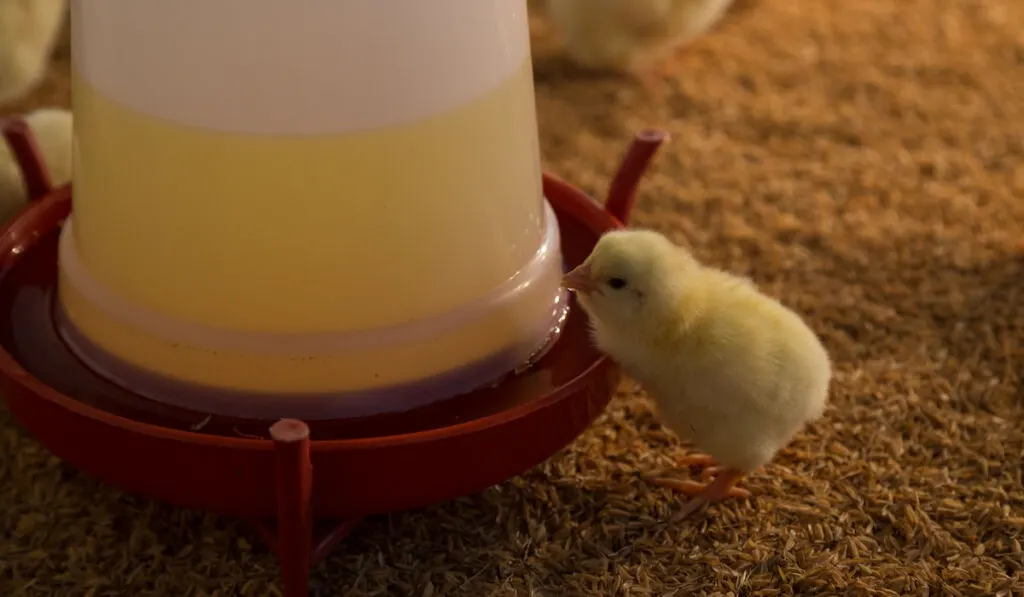
1. Water
Water is as essential to chicks as it is to humans.
Chicks cannot go long without water, especially in their first few days.
They’ll get dehydrated, which is especially dangerous, as it could lead to their deaths.
Not only is water good for hydration, but it also helps to:
- Ensure proper digestion,
- Regulate homeostasis, and
- Maintain electrolyte balance.
Chicks might not drink large quantities, but they frequently drink, so it is necessary that they have water, even at night.
Use proper water dispensers or nipple drinkers instead of open or shallow water dishes.
If you use a fountain-type watering system, filling it up before bedtime can help prevent the water from tipping if the birds roost on it. Alternatively, bucket or cup-style waterers can be a great option.
2. Feed
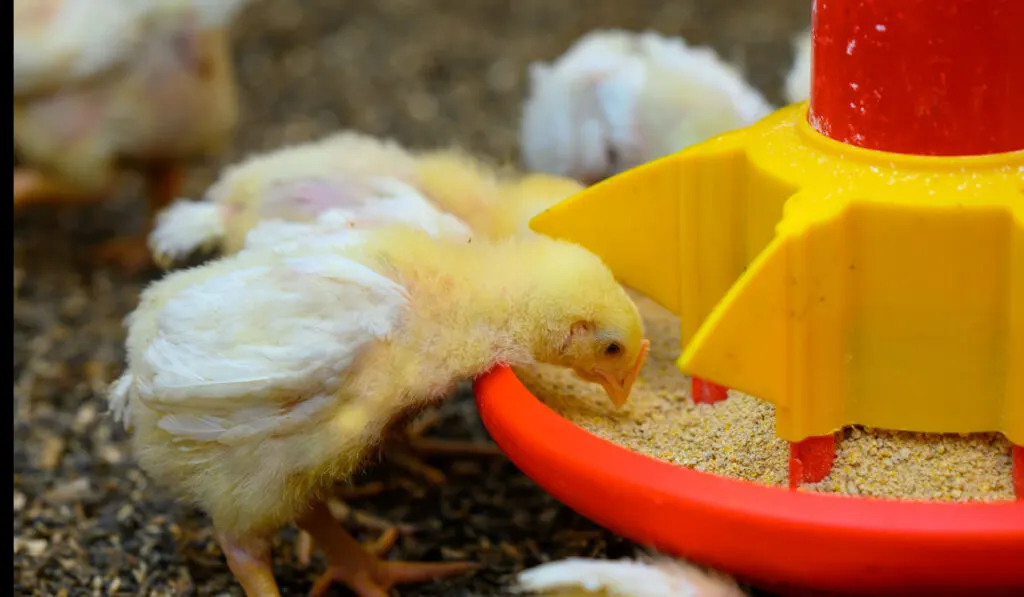
Chicks should be allowed access to feed at all times, especially if you want a healthy, strong, and robust brood.
Birds are often as healthy as what they eat. So, starting them early on with proper feed is pivotal to their growth, production, and health.
They should be fed starter feed, as it is replete with every nutrient they need for their growth and formulated to be easy for their digestive systems to handle.
Starter feed comes in two types: medicated or non-medicated.
If the starter feed you intend to get is medicated, it will contain amprolium. Medicated feed is contra-indicated for vaccinated birds.
The amprolium in the feed will nullify the effects of the vaccine and leave the chicks open to infection.
So, in a situation where the chicks are vaccinated, it’s best to give them non-medicated starter feed.
Offer treats in limited quantities.
And giving chick grit in a dish is necessary if they are fed something besides chick feed.
Here are examples of treats you can feed your chicks.
Vegetables:
Veggies should be served fresh or frozen, not cooked or canned.
You can give them small pieces of cucumber, broccoli, and watermelon. But carrots should be given cooked or shredded.
Mealworms or Insects:
Mealworms and insects are nutritious, unharmful, and especially rich in protein. You can serve them dried or fresh.
These tasty treats might end up being a favorite of your chicks.
Scrambled Eggs:
Don’t be alarmed: this treat is not bad for them in any way and won’t give them the urge to eat eggs in the coop.
Your chicks are blissfully oblivious to the fact that the major ingredient is eggs but keenly aware of the amazing taste.
Try it out; it’s one of the crowd-pleasers.
As your chicks grow, you can give them a wider variety to choose from.
3. Secure Shelter
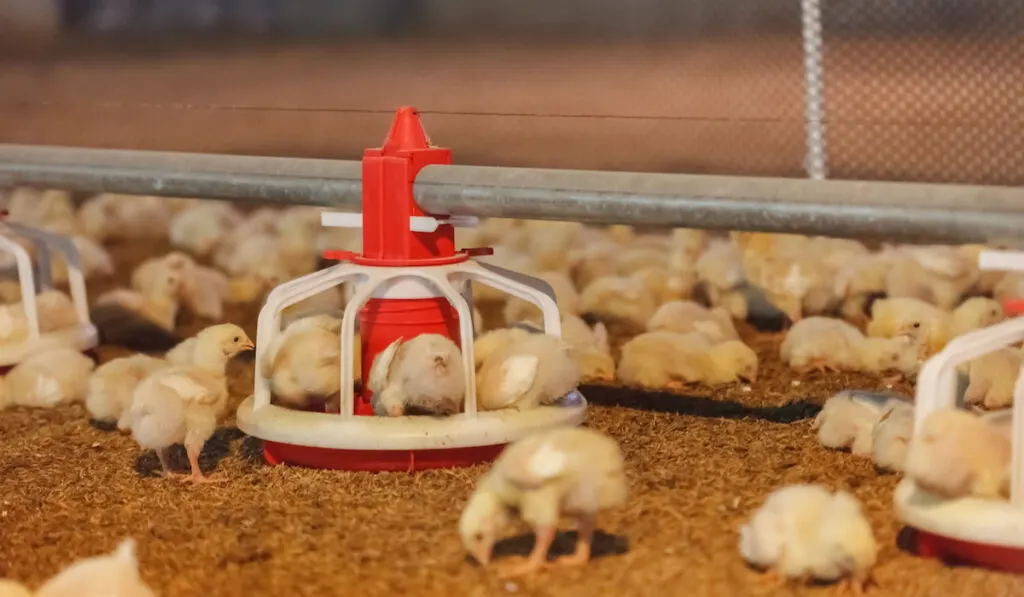
The brooder box or brooding pen should be comfortable and secure for your chicks.
You can use a plastic tub, a big cardboard box, or a homemade coop.
Proper netting with wire mesh or barricading is essential to prevent curious household pets, wild game, or rodents from wreaking havoc and stress in the brooding pen.
Now, predation is not your only problem at night.
The pen or box should also be structured in such a way as to protect them from wind drafts and other factors that can make them irritated, uncomfortable, and restless at night.
However, you must also ensure that the space is adequately ventilated.
4. Heat Source
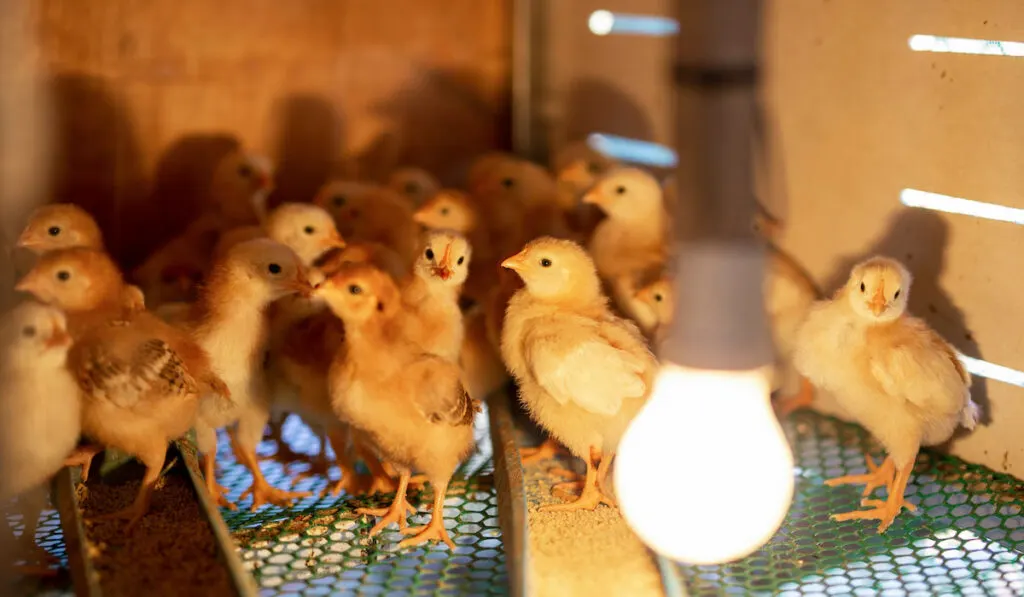
Chicks need warmth above all else (except maybe water) because they haven’t grown out their feathers and cannot regulate their temperature yet.
So it’s imperative that they have a heat source, at least for the first six weeks.
In their first week, the ideal temperature should be 90°F–95°F, with a 5°F reduction every subsequent week.
A telltale sign of overheating: chicks avoiding the heat source and each other.
If you notice this, turn down the heat or raise the heat source away from them.
If the chicks huddle around the heat source, they’re cold. You’ll need to crank up the heat or bring the heat source closer to them to meet their needs.
There are different types of light sources available for brooder pens, such as:
Metal Halogen Lamps
These lamps are least recommended as a heat and light source for chicks as they get very hot and are hard to regulate.
Improper regulation could lead to overheating and heat stress, especially posing a fire risk.
Heat Lamps with Red Light
A heat lamp with red light is a preferred option as it provides heat and light.
It also discourages pecking and cannibalism.
However, a heat lamp can also be dangerous. It is more expensive to power and can cause fire accidents, especially in a brooding pen with highly-flammable wood shavings, feathers, straw, etc.
Heating Plates
The best and safest option would be radiant heating plates. They pose less of a fire risk and can be easily regulated.
They simulate the mother hen’s warmth, a suitable and comfortable temperature for the chicks to thrive.
5. Light Source
Light is very important, especially at night, as the chicks could wake up and try to eat, and they would need to see what they eat.
Light also helps when they are trying to brood for warmth and prevents them from trampling on each other.
You can easily avoid stress, trampling, and cold with a good light source that doubles as a heat source.
As your birds grow older and the heat source is removed, you can still leave on a night light until they can regulate their night/day cycle.
6. Proper Bedding
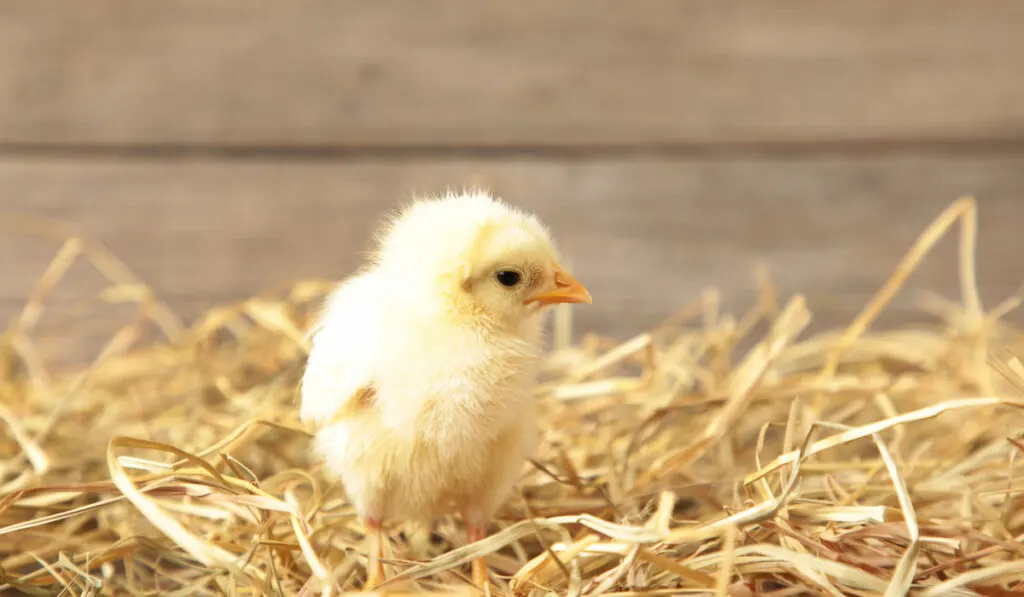
Your chicks haven’t yet learned to identify or differentiate food from the bedding, so it’s important that you choose your type of bedding wisely.
This is especially important during their first few days before they can properly differentiate feed from the bedding.
Favorable bedding types that can be used in the beginning include:
- Paper towels,
- Old towels,
- Carpet, and
- Shelf liner.
It is important to note that these types of bedding need to be changed regularly to prevent diseases.
You shouldn’t use newspapers or magazines, as they can’t retain water.
Also, if the floor is perpetually slippery, it could lead to leg injuries for your chicks.
Once they are grown up a bit and can tell the difference, you can switch the bedding to:
- Wood shavings
- Shredded paper
- Chopped straw
- Hemp bedding
Wire flooring should not be used as they can injure your chicks’ feet.
7. Regular Monitoring
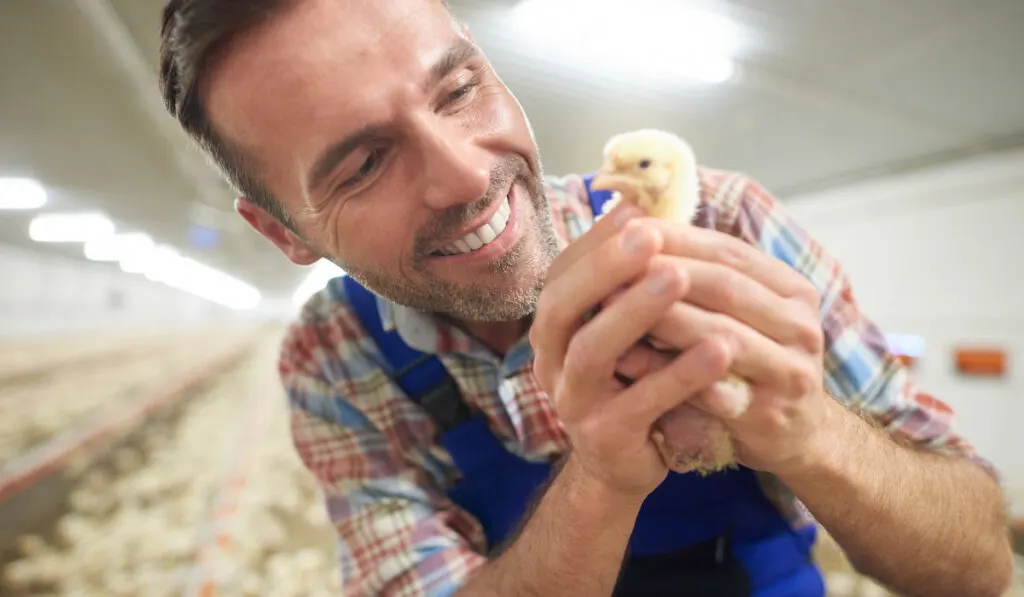
You want to pay attention to your chicks, especially when they’ve just arrived and in the few days following.
When performing regular checks, you should evaluate the following:
Water:
You want to ensure they have enough. Also, ensure that they are not in the water and that it isn’t messy or dirty.
Feed:
Check whether there is enough feed. Ensure that the birds have access to sufficient, clean feed.
Temperature:
You can use a brooding thermometer to check and regulate the temperature for your chicks.
The Behavior of the Chicks:
You can tell by their sounds and behavior if the chicks are uncomfortable.
If everything checks your boxes, you can rest easy, knowing your chicks are okay for the night.

Frequently Asked Questions
You shouldn’t think of withdrawing or not providing water for your chicks. They literally can’t survive without water.
They should have access to clean and fresh water 24/7 (unless otherwise instructed by a veterinarian).
If you must reduce their access to water, wait until they’re older and mature enough, maybe around eight (8) weeks.
Yes, they do.
They have pretty bad eyesight, so it would be hard for chicks to locate feeders, drinkers, and such during dark hours without light.
Yes, they can be allowed to feed at night. In fact, they should have access to food throughout the day so they can grow big, strong, and healthy.
Conclusion
Although chicks are fragile, these cute fluffballs are not difficult to raise.
If you provide them with the above-listed essentials and check on them regularly, you need not worry about them getting through the nights!
Resources
- https://www.muranochickenfarm.com/2021/03/treats-chicks-can-eat.html.html?m=1
- https://melissaknorris.com/podcast/raising-baby-chicks-beginners-guide-for-the-first-6-weeks/
- https://cs-tf.com/how-to-care-for-baby-chicks/
- https://www.plamondon.com/wp/prepare-care-baby-chicks/
- https://backyardfarmlife.com/do-chickens-need-light-at-night/
- https://www.dineachook.com.au/blog/brooder-box-the-best-solutions-for-raising-baby-chicks/
- https://coopeduplife.com/do-chickens-need-food-and-water-at-night/
- https://the-chicken-chick.com/baby-chick-basics-what-you-need-to-know/
- https://thehipchick.com/do-baby-chickens-need-light-at-night/
- https://kentnutritiongroup.com/articles/what-when-feed-chicks/
- https://thehipchick.com/are-eggs-good-for-chickens/
